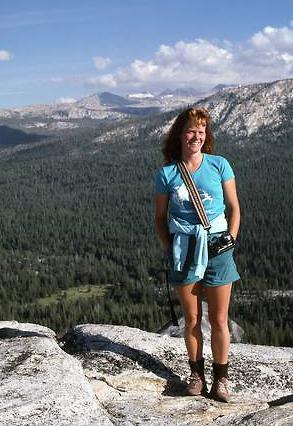Contributed by Len McKenzie
OAKHURST – Perhaps no national park stirs in its legion of aficionados stronger passion, emotional connection and devotion than Yosemite.
By anyone’s measure a special place, the park draws millions of visitors from around the world each year–more than half of them repeat visitors–to marvel at its iconic features and enjoy a host of outdoor experiences.
In short, Yosemite means many things to many people, and the more often visitors return, the more special it becomes to them, evoking the spirited enthusiasm that leads to active support and advocacy for its protection.You can count Barbara Moritsch, formerly a National Park Service (NPS) resource management specialist in Yosemite, among the park’s most passionate and eloquent advocates. She has beautifully expressed that love for Yosemite and its wild character–and her dismay with park planning and management decisions–in her recently published memoir, “The Soul of Yosemite: Finding, Defending, and Saving the Valley’s Sacred Wild Nature.”
Moritsch will be in Oakhurst Thursday, Nov. 8, to present a talk and read excerpts from her book at the monthly program of the Yosemite Area Audubon Society (YAAS). The presentation will be at 7 p.m. at the Oakhurst Methodist Church on Road 426.
As a key member of the Yosemite staff developing management plans for Yosemite Valley and the Merced River, a designated Wild and Scenic River, between 2002 and 2005, Moritsch acquired an insider’s view of park management and the decision-making process.
Her book addresses management decisions that she believes have degraded natural resources in the Valley and articulates a vision that would restore the Valley’s wild nature, recognizing the need to balance visitor use with protection of the values the park was established to protect. She urges the NPS to focus on the basics–protecting natural beauty and wildness and promoting Yosemite’s role as a world model for wildness.
She wrote, “I have a vision–a new, old vision–for Yosemite Valley. It’s new in that it is a product of the twenty-first century, and is unlike any plan that has guided park managers to date. It’s old because similar visions have been developed and proposed, and have waxed and waned, since 1864, when the Valley became a park. It’s new because unlike other similar visions that for one reason or another never gained traction, implementation of this vision, or one similar to it, is absolutely necessary for the ecological health and well-being of Yosemite Valley. I present this vision as a starting point.”
Moritsch’s NPS assignments as an ecologist and interpretive naturalist also took her to four other national parks–Sequoia, Kings Canyon, Death Valley and Point Reyes National Seashore between 1982 and 2006. She holds bachelor’s and master’s degrees in natural resource planning and interpretation, and environmental science. She currently lives in Eagle, Idaho, with her husband Tom, two cats, a dog and three horses.
Like all YAAS programs, Moritsch’s presentation is free and open to the public, although donations to defray program costs and to support Audubon’s local activities are welcome. Refreshments will be available.
The YAAS will also offer its monthly birding trip Saturday, Nov. 24. Participants will meet at the Mariposa Rest Area adjacent to the history center on Highway 140 at 8 a.m. to carpool to the McSwain Forebay and Lake McClure. The trip is free and the public is welcome. Bring binoculars, field guides, snacks, lunch, beverages and wet-weather gear. Dress in layers and wear comfortable walking shoes.
Call (209) 742-5579 or visit www.yosemiteaudubon.org for additional information about either the program or the birding trip.
The mission of the National Audubon Society, the namesake of noted 19th-century naturalist and bird painter John James Audubon, its state affiliate, Audubon California, and local chapters such as the Yosemite Area Audubon Society is to conserve and restore natural ecosystems, focusing on birds, other wildlife and their habitats for the benefit of humanity and the earth’s biological diversity.




